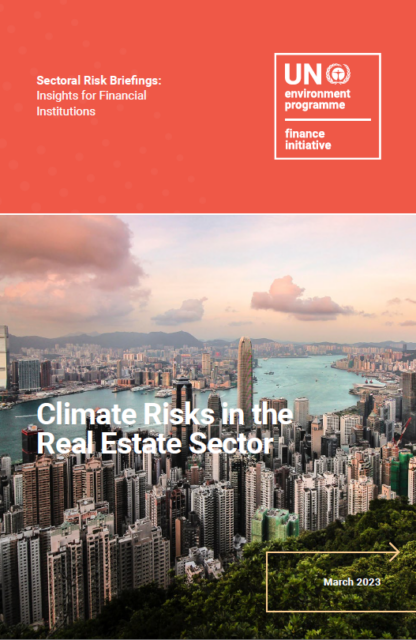Responsible for about 40% of all greenhouse gas emissions globally, the real estate sector is already confronted by high climate risks and will face fundamental changes as the global economy decarbonises to meet climate goals.
With extreme weather events such as hurricanes, floods, and wildfires increasing in frequency and severity due to climate change, the physical threat to real estate assets is real and rapidly increasing. These asset classes and those who rely on the sector also face high transition risks. These include for example declining market attractiveness, increasing regulation, and public pressure.
Designed for banks, investors, insurers and their clients, this brief provides a baseline understanding of the key physical and transition climate-related risks faced by the real estate sector. It aims at empowering professionals to integrate these risks into their institution’s strategy and operations through case studies and risk management recommendations for each risk identified. By helping firms mitigate risks and reduce their financed emissions, this brief can also support financial institutions meet their net-zero carbon commitments.
This resource can be used in conjunction with the climate target setting guidance for real estate sector financing for banks looking to set specific targets to reduce emissions associated with their financing of the real estate sector.
This brief is part of a series covering the following major economic sectors and their associated physical and transition climate risks. All these resources are part of the UNEP FI Risk Centre which helps members take an integrated approach to sustainability risks and aims to accelerate the move a sustainable financial and economic system.



